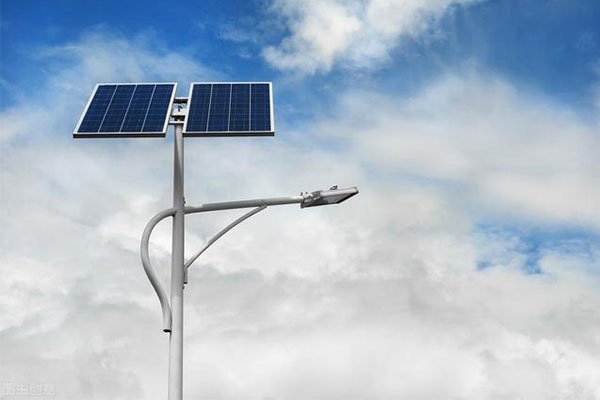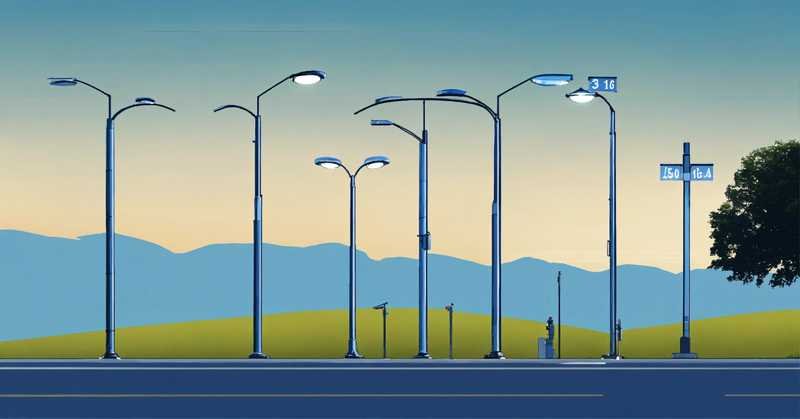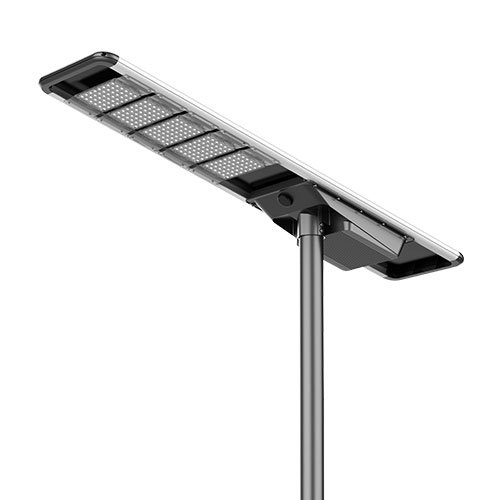Street lighting is not just about how bright it is—it’s about how efficiently it delivers that brightness across large outdoor areas.
Lighting Power Density (LPD) is a critical metric for evaluating how much energy your street lighting system uses per square meter. Lower LPD means lower costs, better performance, and easier regulatory compliance.
Let’s break down why LPD matters so much in outdoor lighting projects, especially when working with solar-powered street lighting systems.
Why Lighting Power Density (LPD) Matters for Street Lighting
When planning roadways, city blocks, or parks, it's easy to focus only on lumen output or wattage. But what really matters is how much power you're using over how much area you’re lighting.
LPD allows us to evaluate the energy intensity of lighting per square meter. It’s an essential tool for designing efficient, cost-effective, and sustainable outdoor lighting systems.
- Helps cities meet local and national energy codes
- Drives energy-efficient upgrades to solar lighting systems
- Prevents over-lighting and reduces light pollution
- Supports smarter battery sizing in solar streetlights
- Enhances green building certification efforts in urban planning
I’ve seen many clients overspend on wattage simply because they didn’t evaluate power usage in relation to the actual area being lit.
What is Lighting Power Density (LPD)?
LPD stands for Lighting Power Density, and it’s calculated using this simple formula:
LPD = Total Power Consumption (Watts) / Lighting Coverage Area (m²)
In outdoor lighting, this means considering:
- Total wattage of street light fixtures (including drivers)
- Pole spacing and beam coverage
- Mounting height and optics
- Area of road, plaza, or public space being illuminated
💡 Example:
A street has 10 solar street lights, each using 40W, lighting a 500 m² area.
LPD = (10 × 40W) / 500 m² = 0.8 W/m²
That value becomes your benchmark for comparing performance, planning upgrades, and checking compliance.
Why is LPD Important in Street Lighting Design?
Whether it’s a 4-lane urban road or a small residential street, the efficiency of your lighting layout directly impacts installation cost, battery sizing, and long-term sustainability.
LPD gives designers, engineers, and city planners a clear, measurable way to optimize street lighting systems.
- Regulatory Compliance: In countries like China, national standards (e.g., CJJ 45-2015) define maximum LPD values for different street types.
- Cost Reduction: Lower LPD means fewer poles, smaller batteries, and better solar panel sizing.
- Eco-Friendly Design: Avoiding over-lighting helps minimize light pollution and protects nocturnal wildlife.
- Energy Independence: For solar systems, lower LPD = longer battery backup + smaller solar panel needed.
We’ve helped clients reconfigure streetlight placement and beam angle to reduce their LPD by over 30%, while improving lighting uniformity.
LPD Guidelines by Roadway Type

LPD isn’t fixed—it depends on the street class, traffic type, and target illuminance.
Here’s a simplified reference based on common public standards and best practices in outdoor lighting:
| Road Type | Avg Illuminance (lux) | Pole Height (m) | Suggested LPD (W/m²) |
|---|---|---|---|
| Urban Main Road | 15–25 lx | 8–12 | 1.2–1.5 |
| Secondary Road | 10–15 lx | 6–10 | 0.9–1.2 |
| Residential Street | 5–10 lx | 4–6 | 0.5–0.8 |
| Park Pathway | 3–5 lx | 3–4 | 0.2–0.4 |
| Plaza or Square | 10–20 lx | 5–8 | 0.8–1.0 |
These values vary by country. But the point is: you don’t always need high wattage—you need smart placement, right optics, and well-calculated power density.
How to Reduce LPD in Solar Street Lighting Projects
Lowering LPD doesn’t mean lowering light quality. It means doing more with less.
Here are proven strategies I use when designing solar-powered outdoor lighting:
- ✅ Simulation First: Use software like Dialux or Relux to simulate coverage. Don't guess.
- ✅ Select Optics Carefully: Use Type II or Type III asymmetric lenses to focus light on the road, not the sidewalk or buildings.
- ✅ Increase Mounting Height: A higher pole with the right lens often lights more area with fewer fixtures.
- ✅ Reduce Wattage, Not Visibility: Choose LED chips with high efficacy (>150 lm/W) so you can lower power without reducing lux.
- ✅ Use Smart Controllers: Motion sensors, dimming profiles, and time-based brightness curves help avoid over-lighting low-traffic hours.
In one rural village project, we replaced a 60W light per pole setup with 40W models using wide-angle optics and motion dimming. Light levels stayed the same, but LPD dropped from 1.2 to 0.7 W/m².
Case Example: Optimizing LPD for a Road Upgrade

A municipal client wanted to upgrade a 2-lane secondary road with solar lights. The original plan had:
- 12m spacing
- 60W lights
- Standard optics
After simulation, we revised the layout:
- Increased spacing to 15m
- Switched to 40W LEDs with high-efficacy chips
- Added Type II optics with backlight shielding
Result:
- Maintained 15 lux average
- LPD dropped from 1.5 W/m² to 0.9 W/m²
- Reduced pole count by 20%, saving costs
- Improved battery life during cloudy days
This is the kind of result possible when LPD guides your design decisions.
Conclusion: LPD is the Foundation of Smart Street Lighting
Lighting Power Density is more than a number—it’s your roadmap to energy-efficient, cost-effective, and reliable outdoor lighting. Whether you're planning solar street lights for a city avenue or a rural community, designing for lower LPD ensures better results.
Focus on layout, optics, and simulation—not just wattage.

FAQs: Lighting Power Density for Street Lights
What is a good LPD for street lighting?
For secondary roads: 0.9–1.2 W/m². Residential streets and parks: 0.4–0.8 W/m².
How do I calculate LPD for my road project?
Total lighting wattage (including driver) ÷ total area illuminated (in m²).
Does lower LPD mean dimmer lighting?
Not if you use high-efficacy LEDs, optimized optics, and smart spacing.
Can solar lights meet strict LPD targets?
Yes. With the right optics, battery sizing, and layout, solar systems can meet or beat grid-powered setups.
How does pole height affect LPD?
Taller poles can reduce fixture count and lower LPD—but only if paired with wide-beam lenses and proper distribution.







